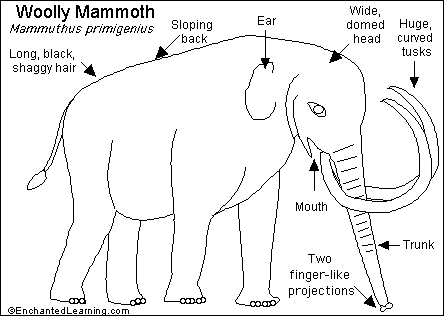
Range Map of Woolly Mammoths
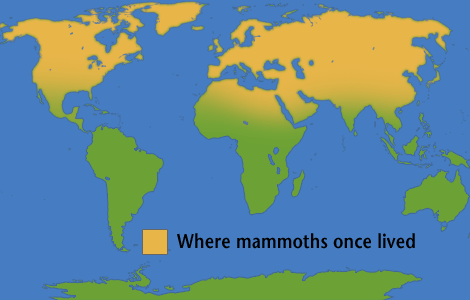
Quick Facts
Type: Mammal
Diet: Herbivore
Average lifespan: 60 – 80 years
Size: 13 feet tall
Weight: Average, 6 tons
Woolly Mammoth Jokes
Q. Why did the Great Woolly Mammoth cross the road?
A: Because they didn’t have chickens in the Ice Age.
Q. What time is it when a Great Woolly Mammoth sits on your igloo?
A: Time to build another igloo.
Q. What is huge, shaggy, has 16 feet and sounds terrible.
A: A Mammoth barbershop quartet.
Q. What’s huge and shaggy with tusks and horns?
A: The Woolly Mammoth Marching Band!
Q. What would you give to a Mammoth that is having an anxiety attack?
A: Trunkquilizers!
Q. What is shaggy, has a wand, huge wings, flies at night, and gives money to Woolly Mammoths?
A: The tusk fairy!
Q. What weighs 4 tons and has 16 wheels?
A: A Mammoth on roller skates!
Q. Why do Woolly Mammoths have trunks?
A: Because they’d look pretty silly with glove compartments.
Q. What’s another reason Mammoths have trunks?
A: Because they’d also look silly carrying suitcases!
Q. How do you know when a Mammoth is under your bed?
A: Your nose gets cold because it’s squished against the top of your igloo.
Q. How do you run over a Mammoth?
A: Climb up its tail, run to its head, and slide down its trunk.
Q. What do you get if you cross a Woolly Mammoth and a kangaroo?
A: Big holes all over the ice!
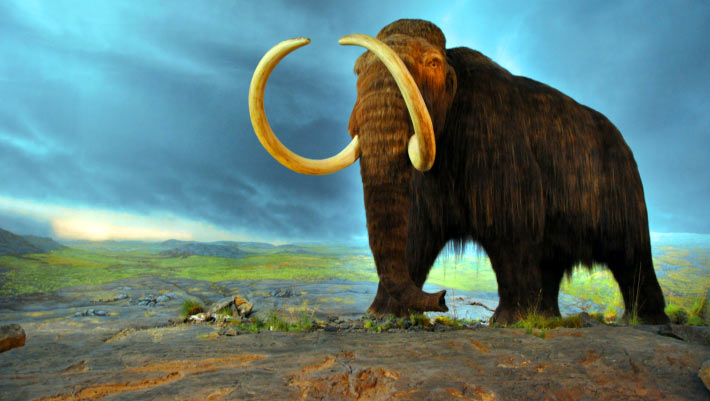
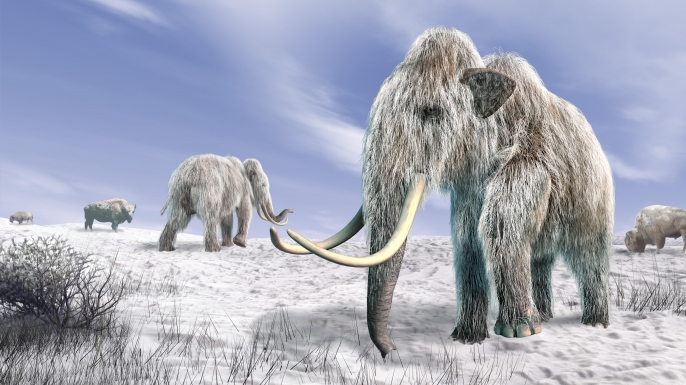
Woolly Mammoth Types

Woolly Mammoth Anatomy
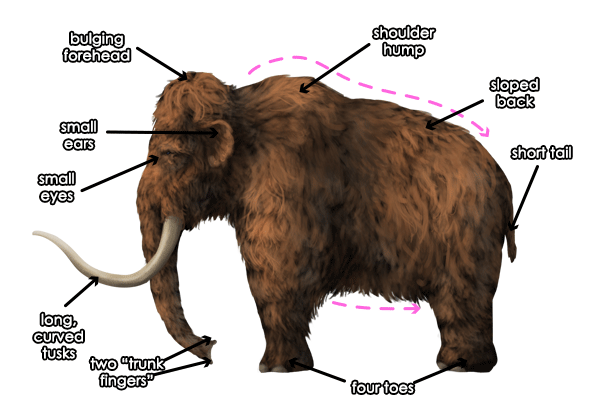
Woolly Mammoths
-
- Were roughly about the size of modern African elephants
-
- Like their thick coat of fur, their shortened ears were an important cold-weather adaptation because it minimized frostbite and heatloss
-
- Scientists can discern a woolly mammoth’s age from the rings of its tusk, like looking at the rings of a tree
-
- The first fully documented woolly mammoth skeleton was discovered in 1799
-
- Although, most of the woolly mammoth population died out by 10,000 years ago, a small population of 500-1000 woolly mammoths lived on Wrangel Island until 1650 BC. That’s only about 4,000 years ago!
-
- Coexisted with early humans, who used its bones and tusks for making art, tools, and dwellings, and the species was also hunted for food
- Woolly mammoths would have eaten similar vegetation to modern-day elephants, browsing the forests for leaves, fruits, nuts, twigs and berries.
Woolly Mammoth Print Out
Video
Sources
http://blog.ted.com/10-fascinating-facts-about-woolly-mammoths
http://www.livescience.com/56678-woolly-mammoth-facts.html
http://www.enchantedlearning.com/subjects/mammals/mammoth
http://images.nationalgeographic.com/wpf/sites/kids/NGS/wpf/printcreature/mammoths.html
http://a-z-animals.com/animals/woolly-mammoth

